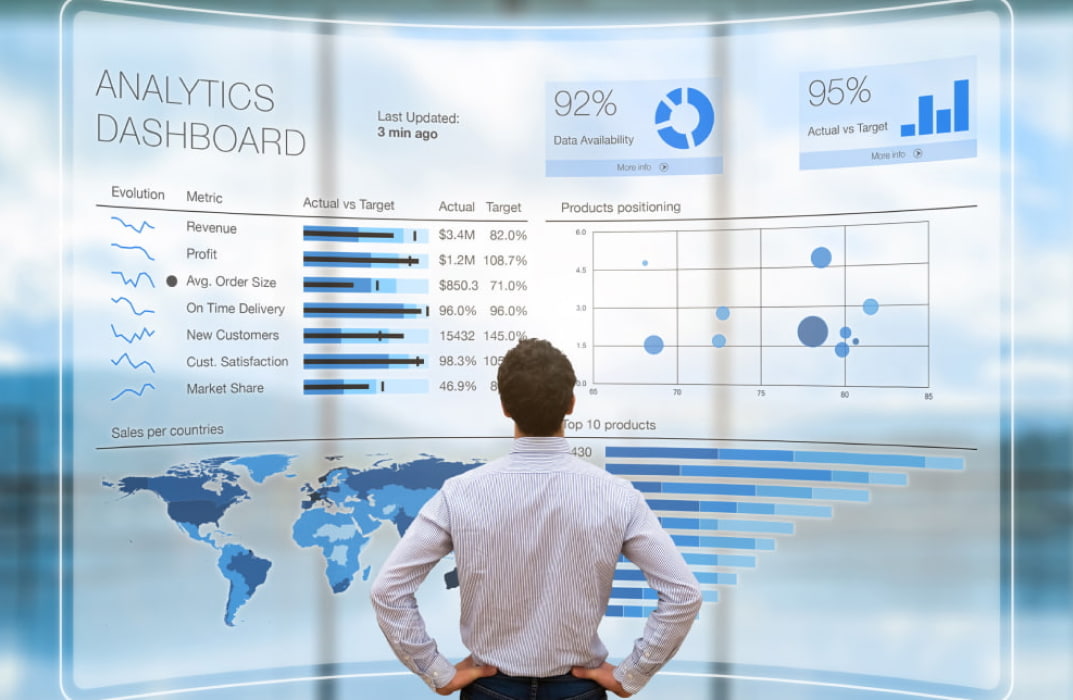Course Overview:
Are you ready to unlock the world of digital possibilities by understanding the art and science of data analytics? We live in an era where data back every decision and every action requires insightful analysis. Clive Humby said, “Data is the new oil, and it’s the new oil, so it’s an invaluable resource for companies worldwide.
This comprehensive course covers a broad spectrum of data analytics, starting with an engaging ‘Introduction to the World of Data,’ before delving into the fundamental components like the ‘Basics of Data Analytics,’ ‘Statistics for Data Analytics,’ and the ‘Actions Taken in the Data Analysis Process.’ Each subsequent module is carefully designed to guide you through various stages of data analytics. You’ll explore ‘Data Mining,’ work with ‘Excel for Data Analytics,’ and discover ‘Tools for Data Analytics.’ The curriculum wraps up with a focus on ‘Data-Analytic Thinking’ and ‘Data Visualisation.’
Enrol today and start your journey to becoming a data analytics expert!
Key Features of the Course:
This course comes with a CPD certificate, affirming your proficiency in data analytics. It offers 24/7 learning assistance to ensure you get the most out of your learning journey. The content is presented in easy-to-understand and engaging learning materials, carefully curated to make your journey in data analytics enlightening.
Who is This Course For?
This course suits professionals seeking to leverage data analytics in their respective fields, individuals aspiring to venture into the data science arena, and students keen to acquire contemporary skills for the digital age.
What You Will Learn:
Understand the fundamental concepts of data analytics.
- Apply statistical techniques to analyse large data sets.
- Implement effective strategies for data collection and storage.
- Master the art of data mining and extraction of valuable insights.
- Utilise Excel and other tools effectively for data analysis.
- Develop a data-analytic mindset for problem-solving.
- Translate data insights into compelling visualisations.
Why Enrol in This Course:
This course will open doors to many opportunities. You will learn from top-notch professionals, utilise quality learning materials and have access to trending and recently updated curriculum.
Requirements:
- A basic understanding of computers
- A willingness to learn
Career Path:
The expertise gained from this Data Analytics course can pave your way into a variety of professions, such as:
- Data Analyst (£30,000-£60,000)
- Business Analyst (£35,000-£70,000)
- Market Research Analyst (£27,000-£55,000)
- Operations Analyst (£31,000-£62,000)
- Quantitative Analyst (£45,000-£85,000)
- Data Scientist (£50,000-£90,000)
- Data Engineer (£35,000-£75,000)
Certification:
On successful completion of this course, you will receive a CPD certificate, testifying your mastery in the field of data analytics. With this recognition, you can confidently showcase your skills and expertise in the professional world.
Data analytics is a powerful tool that can be used to make better decisions, improve efficiency, and drive innovation. If you want to join this growing field, this course is for you!
FAQ
What do you mean by data analytics?
Data analytics is the process of collecting, cleaning, analyzing, and interpreting data to extract insights.
What data analytics actually do?
Data analytics helps businesses make better decisions by providing them with insights into their data. This can include insights into customer behavior, market trends, and product performance.
What are the 5 data analytics?
The 5 data analytics are:
- Descriptive analytics: This type of analytics describes what has happened in the past.
- Diagnostic analytics: This type of analytics identifies the root cause of problems.
- Predictive analytics: This type of analytics predicts what will happen in the future.
- Prescriptive analytics: This type of analytics recommends actions to take based on the predictions.
- Visual analytics: This type of analytics uses visual representations of data to make it easier to understand.
What is data analytics examples?
Here are some examples of data analytics:
- A retailer uses data analytics to track customer behaviour and identify trends.
- A bank uses data analytics to predict which customers are likely to default on their loans.
- A healthcare provider uses data analytics to identify patients who are at risk for certain diseases.
What are 4 types of analytics?
The 4 types of analytics are:
- Descriptive analytics: This type of analytics describes what has happened in the past.
- Diagnostic analytics: This type of analytics identifies the root cause of problems.
- Predictive analytics: This type of analytics predicts what will happen in the future.
- Prescriptive analytics: This type of analytics recommends actions to take based on the predictions.
Why do we use data analytics?
We use data analytics to make better decisions, improve efficiency, and drive innovation.
Here are some of the benefits of using data analytics:
- Better decision-making: Data analytics can help businesses make better decisions by providing them with insights into their data.
- Improved efficiency: Data analytics can help businesses improve efficiency by identifying areas where they can save time and money.
- Driven innovation: Data analytics can help businesses drive innovation by identifying new opportunities and trends.
Course Curriculum
- 14 sections
- 14 lectures
- 12 hours, 25 minutes total length
-
Introduction to the World of Data
01:00:00
-
Basics of Data Analytics
00:40:00
-
Statistics for Data Analytics
01:00:00
-
Actions Taken in the Data Analysis Process
00:55:00
-
Gathering the Right Information
01:00:00
-
Storing Data
01:15:00
-
Data Mining
01:00:00
-
Excel for Data Analytics
01:20:00
-
Tools for Data Analytics
01:20:00
-
Data-Analytic Thinking
01:10:00
-
Data Visualisation That Clearly Describes Insights
00:45:00
-
Data Visualization Tools
01:00:00
-
Assignment – Data Analytics
-
Claim Your Certificate










